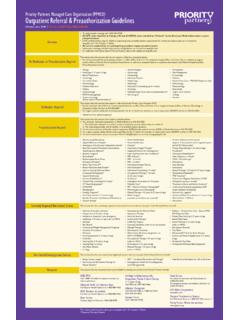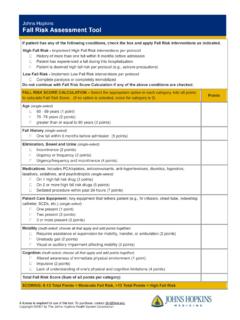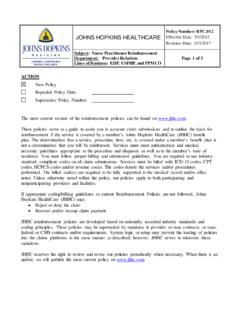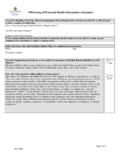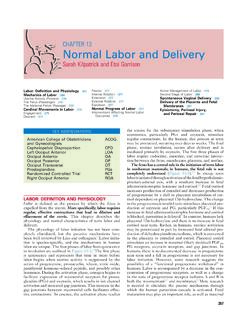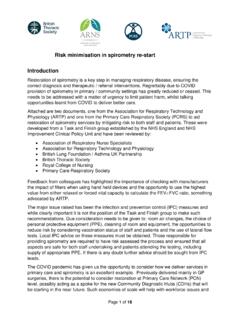Transcription of Irritable Bowel Syndrome (IBS): Introduction
1 Figure 1. Location of the colon in the Bowel Syndrome (IBS): Introduction Irritable Bowel Syndrome (IBS), which is classified as a functional gastrointestinal disorder, is a chronic condition of the lowergastrointestinal tract (Figure 1) that affects as many as 15% of adults in the United States. Not easily characterized bystructural abnormalities, infection, or metabolic disturbances, the underlying mechanisms of IBS have for many yearsremained unclear. Recent research, however, has lead to an increased understanding of IBS. As a result, IBS is nowconsidered an organic and, most likely, neurologic Bowel disorder.
2 IBS is often referred to as spastic, nervous or Irritable colon. Its hallmark is abdominal pain or discomfort associated with achange in the consistency and/or frequency of Bowel movements. Although the causes of IBS have not to date been fullyelucidated, it is believed that symptoms can occur as a result of a combination of factors, including visceral hypersensitivity,altered Bowel motility, neurotransmitters imbalance, infection and psychosocial factors (Figure 2). Figure 2. Possible causes of Irritable Bowel frequency of IBS in any given population depends, in part, on the ethnic and cultural background of the population being studied, and the criteria used todiagnose the disease.
3 Eight to 20% of adults in the Western world report symptoms consistent with IBS (60-70% of these are women). In the United States, as manyas 15% of adults (about 35 million people) report IBS symptoms (note: the frequency of IBS among Caucasian, African American and Hispanic populations isrelatively consistent). Asia and Africa have similar rates to those in the United States, and the Western world in general. In India and Sri Lanka, IBS is more commonamong men, although it is possible that this is a result of differences in symptom reporting and health care use between genders.
4 Physiological differences betweenmen and women impact gastrointestinal transit time, visceral sensitivity, central nervous system processing, and specific effects of estrogen and progesterone on gutfunction. While the effect of gender on seratonergic agents efficacy has been examined, much less is understood about gender differences in nondrug therapies fortreatment of IBS. Overall, the differences in IBS incidence rates between genders and populations can probably be explained by viewing IBS as a biopsychosocialdisorder in which not only abnormal sensation and motility, but also psychosocial factors play a about 10% of people with symptoms of IBS present to physicians for evaluation or treatment.
5 In spite of this, the health-care related costs of IBS are accounts for nearly million physician visits in the annually, and is the most common diagnosis in gastroenterologists practice. In addition, several studieshave suggested that the impact of IBS on health-related quality of life is equally as significant as congestive heart failure and dialysis-dependent renal failure. Patientswith IBS have higher rates of absenteeism from work and school. In one study, the direct healthcare costs for patients with IBS were estimated at $8billion, while indirect costs were estimated at $25 billion per year.
6 Such studies overlook the significant societal impact of IBS in terms of physical and emotionalfunction, interpersonal relationships and psychological distress. What is Irritable Bowel Syndrome ? Irritable Bowel Syndrome is a chronic condition of the lower gastrointestinal tract. The symptoms of IBS may include abdominal pain, distention, bloating, indigestionand various symptoms of defecation. There are three subcategories of IBS, according to the principal symptoms. These are pain associated with diarrhea; painassociated with constipation; and pain and diarrhea alternating with constipation (Figure 3).
7 Each patient s symptoms are unique. While IBS may occur as anoccasional nuisance for some people, others may experience intense pain that compromises their quality of life. Figure 3. The three symptom subcategories of Irritable Bowel does not lead to more serious disease, nor does it shorten the life span of those affected. It is not an inflammatory, infectious or malignant condition and has not been found to lead to colitis. Furthermore, IBS is not a psychiatric disorder, although it is tied to emotional and social stress, which can affect both the onset andseverity of symptoms.
8 While IBS is not considered a life-threatening disease, IBS patients suffer from a disproportionately higher rate of co-morbidity with otherdisorders, such as fibromyalgia, chronic fatigue, pelvic pain and psychiatric features of the Syndrome include motility, sensation and central nervous system dysfunction. Motility dysfunction may be manifest in muscle spasms;contractions can be very slow or fast. An increased sensitivity to stimuli causes pain and abdominal discomfort. Researchers also suspect that the regulatory conduitbetween the central and enteric pathway in patients suffering from IBS may be suggests that many patients with Irritable Bowel Syndrome have disorganized and appreciably more intense colonic contractions than normal controls.
9 Astudy at Johns Hopkins reported that healthy volunteers had 6 8 peristaltic contractions in the colon in a 24-hour period. In contrast, IBS volunteers in whom theprimary symptom was constipation had almost no contractions, and IBS volunteers in whom the primary symptom was diarrhea had as many as 25 contractions aday. Researchers have also found that pain is frequently associated with irregular motor activity of the small intestine when compared with either normal controls orpatients with Inflammatory Bowel Disease. Patients with this disease appear to have a defect of visceral pain processing although whether or not this is a truehypersensitivity or hyper-vigilance remains controversial.
10 Interestingly, however, ileal and rectosigmoid balloon-distention studies have demonstrated that patients withIBS experience pain and bloating at balloon pressures and volumes that are significantly lower than those which cause symptoms in normal controls. PathophysiologyThe biopsychosocial model of IBS integrates a number of psychosocial, motility, sensory abnormalities and abnormalities in central nervous system processing ofvisceral pain as the causes of abdominal pain and altered Bowel habits (Figure 4.)Figure 4. The biopsychosocial model of Irritable Bowel dysfunction contributes to some symptoms of IBS, such as abdominal pain, defecatory urgency, and postprandial Bowel movements.


